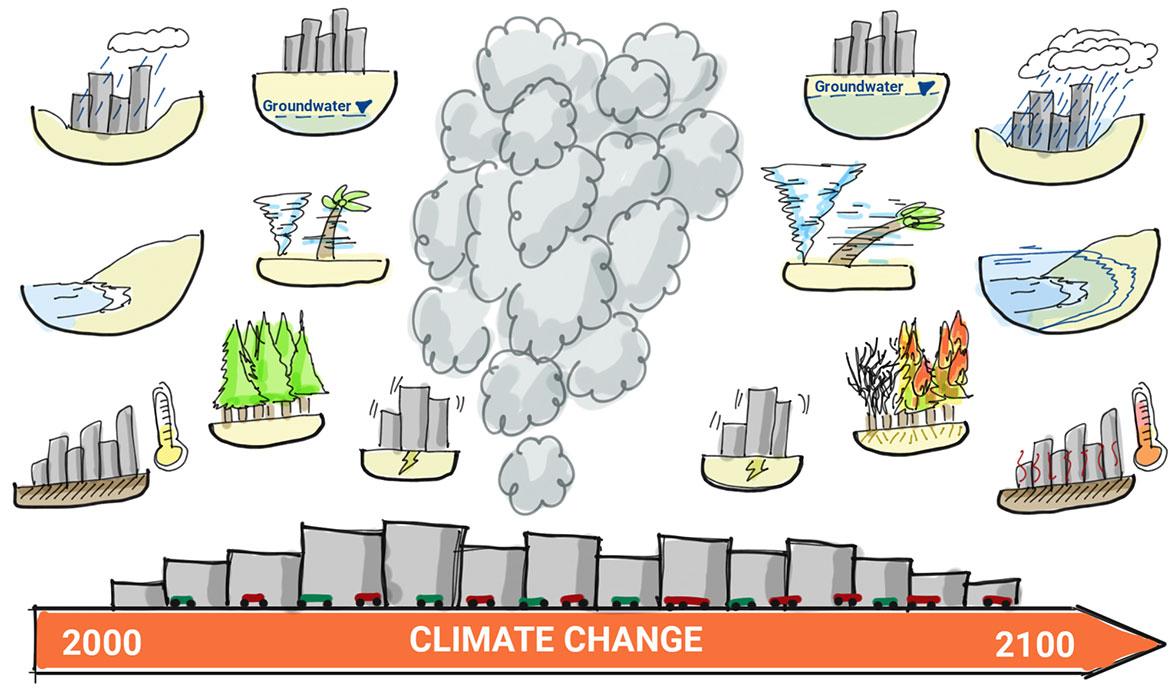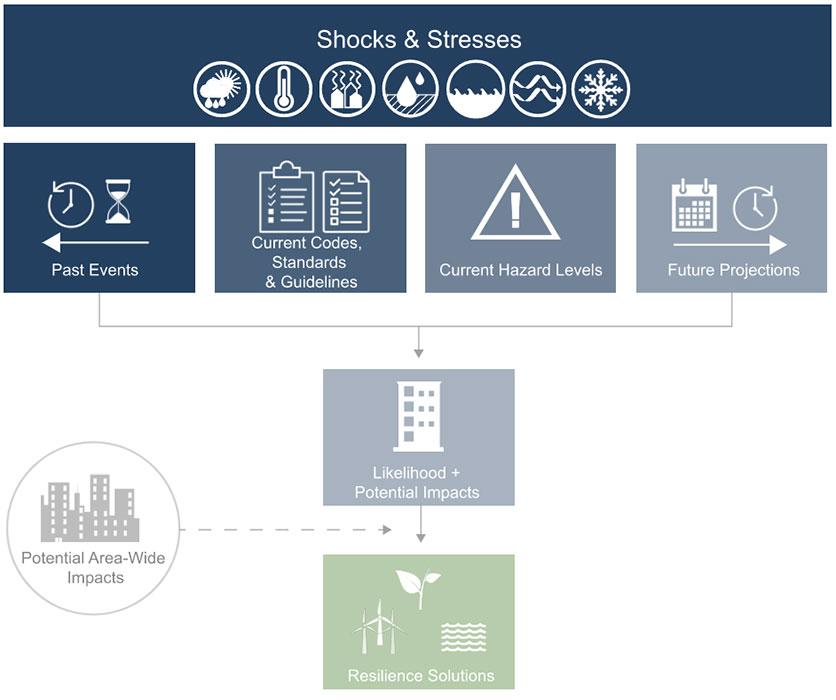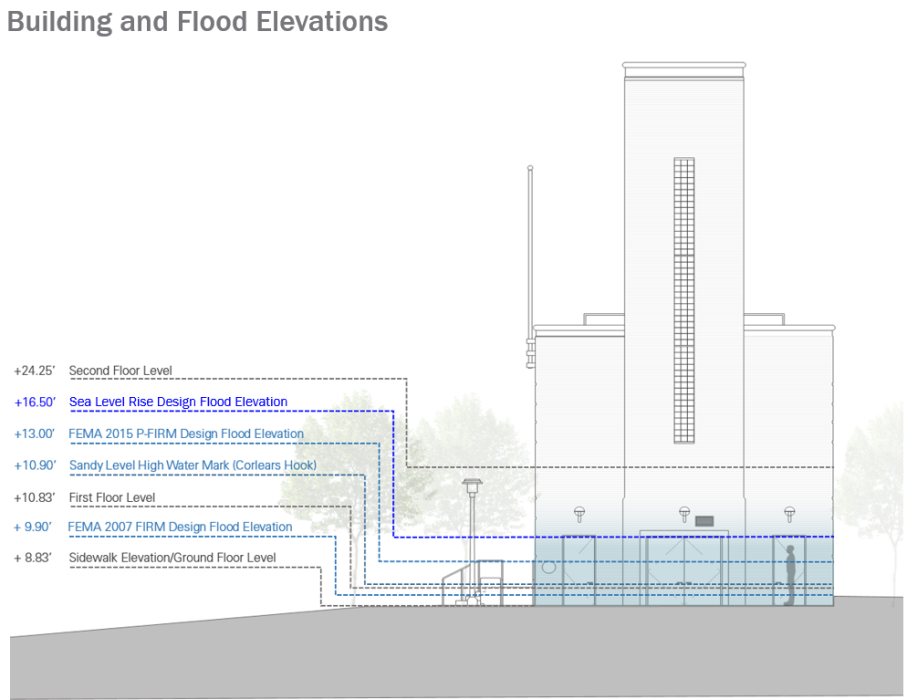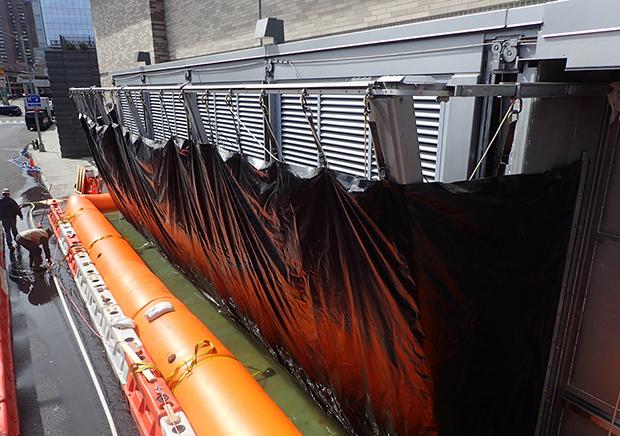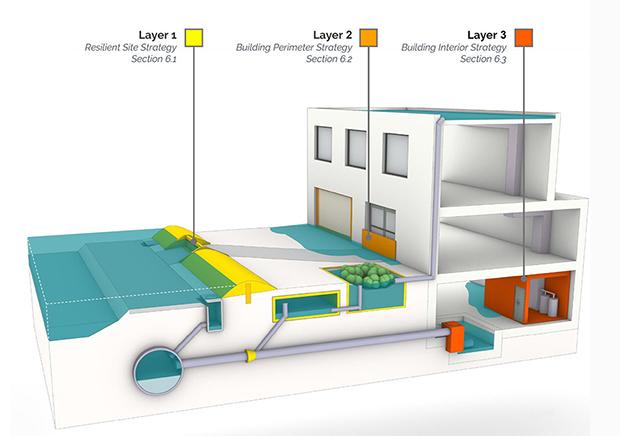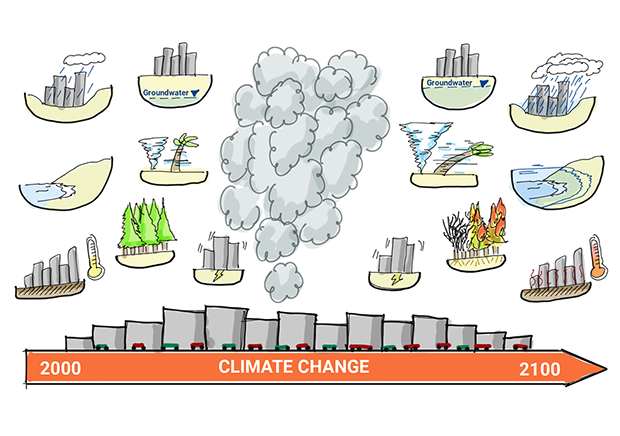Climate Risk Assessments
We apply a multidisciplinary climate risk and resilience approach to address site-specific climate hazards over the short, medium and long terms.
Even if we had already reached worldwide net-zero greenhouse gas emissions, studies show that the effects of previous emissions will continue contributing to global warming throughout our lifetimes and far into the future. Resilience is an essential component in how we adapt to that future. We apply a multidisciplinary climate risk and resilience approach to assess vulnerabilities, considering the likelihood of impacts to site-specific climate hazards over the short, medium and long terms. When feasible, we look beyond code-level minimums to provide design criteria for building systems considering useful life and projected climate change data.
Here's How
A Unified Approach
Risk is a complex function of interdependent factors. Using a consistent approach to assess risk allows effective comparison across hazards and aids the process of identifying the most impactful resilience measures for implementation. For instance, if a building is designed to withstand a projected storm surge that includes sea level rise, it is important to also assess the possibility of a rising groundwater table and its effects on foundational elements. Similarly, protecting against a catastrophic flood has little value if the same building is severely damaged by a code-based windstorm or earthquake.
We begin our climate risk assessments by identifying relevant climate hazard levels based on historical occurrences, current code requirements, and how potential hazards may change over the project lifespan due to a changing climate. We then evaluate the site’s exposure to each hazard based on the return period and projected future intensities. We also analyze the potential site- and area-wide impacts to people, physical assets, operations, revenue, and reputation to develop design criteria.
To mitigate the identified vulnerabilities and potential adverse impacts, we recommend future-focused resilience design criteria that goes beyond the code-minimums. We develop these criteria through a multidisciplinary lens that considers all aspects of the project. From the building structure and foundation systems to utilities, façade, and vertical transportation, along with site and landscaping, we strategize resilience solutions to achieve a unified design that is feasible and adaptive.
Qualifications
We can perform risk assessments and probable maximum loss studies for any kind of climate shock and stress events including:
- Cloudbursts and stormwater flooding
- Coastal storm surge
- Drought
- Earthquake ground shaking and liquefaction
- Erosion and scour
- Extreme heat
- High winds and tornadoes
- Rising groundwater tables
- Riverine flooding
- Sea-level rise and tidal flooding
- Severe winter weather
- Tsunami
- Wildfire
Our Team



